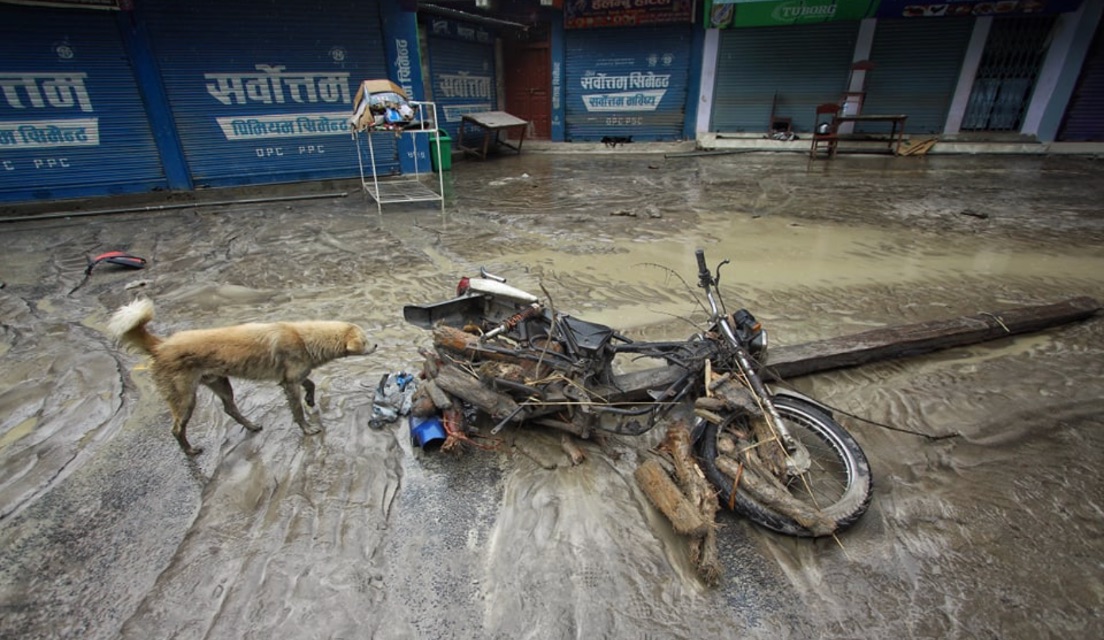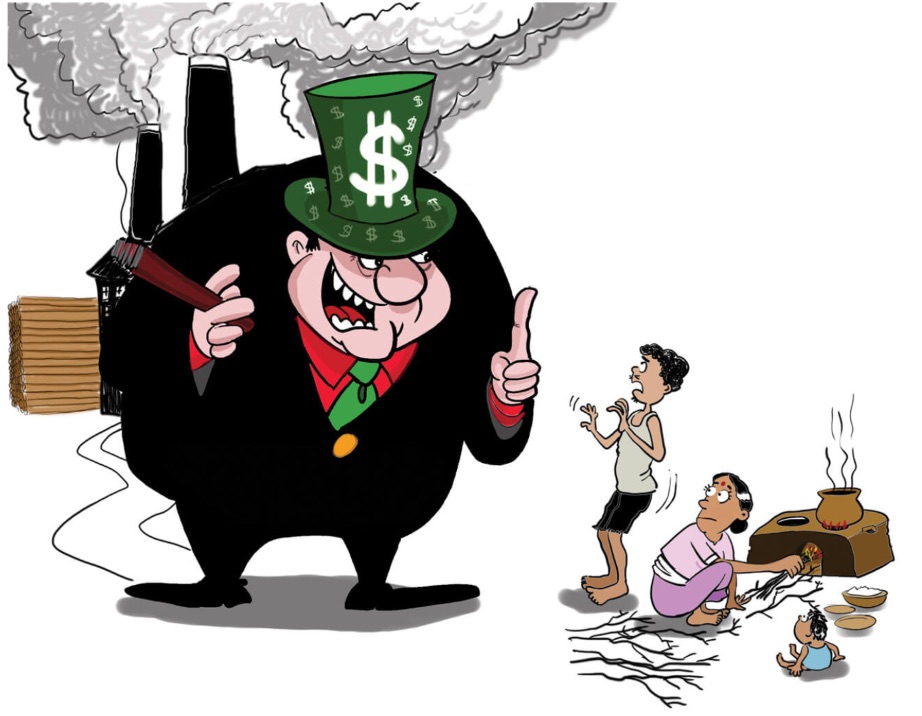Nepal hit by disaster during climate talks

Even as Nepal’s delegates at virtual meetings preparing for a Climate Summit in Glasgow in November were raising the issue of risk from the climate crisis last week, in the real world the monsoon season got off to a devastating start.
There could not have been a starker reminder of just how a changing climate leads to extreme weather. Record rainfall last week unleashed floods that killed more than 50 people, damaged 12 hydroelectric plants and washed away roads, bridges and homes across Central Nepal. The heavy rains followed a five-month winter drought that set off unprecedented nationwide wildfires.
Nepali climate experts raised concerns at the meetings that due recognition was not being given to mountain ecosystems and helping poorer countries to deal with the impact of the climate crisis in the run-up to the Glasgow climate summit, officially called the Conference of Parties 26 (CoP26).
Nepal has one of the lowest per capita carbon footprints in the world, but it is on the list of countries most vulnerable to changes in the climate. Even in the best-case scenario for limited global average temperature by reducing carbon emissions, the Himalaya will lose more than one-third of its ice during this century.
“Even if we are successful in limiting global temperature rise to 1.5°C, it will be equivalent to an 1.8°C rise in the Hindu Kush Himalayas and we will be losing 36% snow by the end of the century,” said Arun Bhatta, an undersecretary at the Ministry of Forests and Environment.
What happens to the Himalaya will have serious implications for 650 million people across Asia who depend on rivers that originate here, Bhatta told the three-week virtual preparatory sessions that ended on 17 June.
Many other countries in the sessions raised concern about inadequate discussion on how least-developed countries can be compensated for loss and damage from climate-induced disasters, and for measures to adapt to new threats from global warming.
Nepali delegates underlined the need to prioritise mountain eco-systems, climate financing for poorer countries and unmet pledges for climate financing from developed countries. They said there was a differential impact of the climate emergency on the Himalaya that needed specific attention and international support.
The virtual meetings were held to prepare key agenda items for the Glasgow Summit, which because of the pandemic, will probably not be an in-person conference in November. The meetings were hosted by the United Nations Framework Convention on Climate Change (UNFCCC) of which Nepal is a party and signatory of the 2015 Paris Agreement.
Throughout the three weeks of virtual meetings, delegates discussed adaptation, loss and damage, the carbon market, and reporting under the Nationally Determined Contributions (NDCs), climate finance, agriculture and the National Adaptation Plan (NAP).

With rising global awareness about the climate crisis, the CoP26 aims to generate major contributions from member states to achieve net-zero carbon emission by 2050, protect and restore ecosystems, cap average global temperature at 1.5°C, and mobilise at least $100 million in climate finance every year till then.
As part of the Paris Agreement, member countries have come up with their own NDCs with legally non-binding voluntary contributions to attain net-zero carbon emission. Nepal submitted its second NDC in December last year to turn 25% of all private vehicles and 20% of all public transport vehicles electric by 2025. In 10 years, Nepal’s NDC commits to develop 200km of electric rail network.
The climate crisis is already impacting Nepal as seen with recent disasters like floods, landslides, forest fires, Glacier Lake Outburst Floods (GLOFs), and erratic weather. Being a ‘Least Developed Country’ Nepal can receive climate finance to adapt and mitigate the impacts of climate change.
One agenda for CoP26 is to pressure the international community for easier access to adequate and predictable climate finance. At the recent virtual meetings delegates stressed that climate finance should be transparent, equitable, fair and based on common but differentiated responsibilities.
Srijana Shrestha, undersecretary at the Ministry of Forest and Environment and a delegate focusing on the National Adaptation Plan (NAP) proposed carrying out a comprehensive vulnerability and risk assessment, and called for finance and technology to implement it.
“In the last 10 years we have only received 21% of the funding for the implementation,” she told the meeting. “We must not repeat the same situation and the international community must support implementing adaptation, and not preparing for it.”
Nepal’s civil society delegates were concerned that the support so far has not even come close to the annual $100 billion pledged by richer countries.
Radha Wagle of the Climate Change Management Division of Nepal’s Ministry of Forests and Environment and head of delegation in the closing plenary urged all countries to aim for the 1.5°C temperature target of the Paris Agreement.
For this, the Glasgow summit will be critical in negotiating various agenda items, including climate finance, capping global emissions and adaptation to the climate crisis.
Diya Rijal is a communication consultant for the UK government-funded Policy and Institutions Facility.




